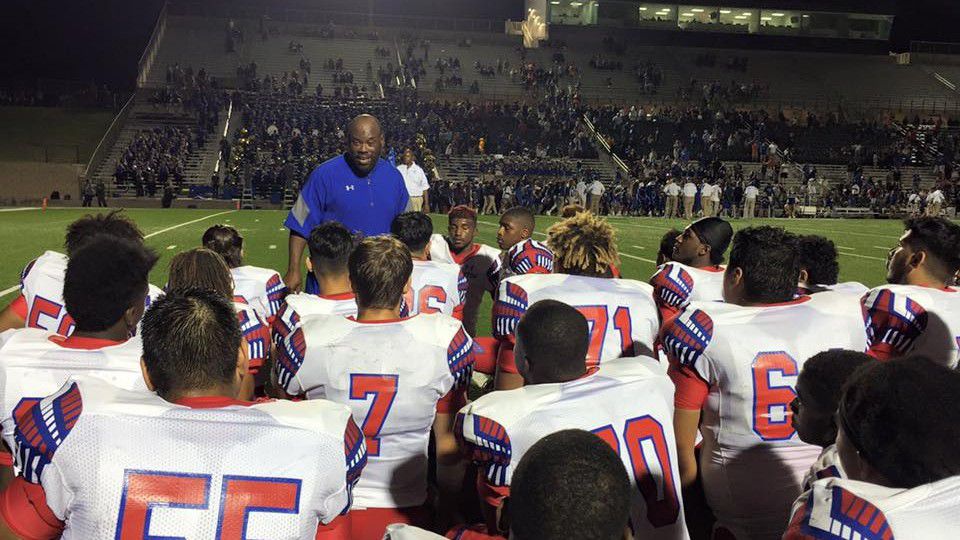ARLINGTON, Texas — Lost in the yo-yoing of when school will start, how long classes will be online, and the other COVID-related quirks school districts are dealing with this year is the plight of student athletes. For the past month or so, many high school-aged students have been preparing for the fall season amid a swirl of uncertainty. They’ve had to quickly learn and adapt to new safety protocols that would (and in many cases have) confound most adults.
In July, the University Interscholastic League set guidelines for how coaches and athletes should return to the field. The list of new rules and standards left some decision-making to the discretion of local health authorities.
The UIL pushed back the start of high school athletics for Class 5A and 6A schools – the largest classifications in the state – to Sept. 7. Volleyball matches could start on Sept. 14, and football games will kick off Sept. 24. Most of the state’s schools are continuing as scheduled, with practice having started on Monday and games set to begin on Aug. 27.
As part of its COVID-19 risk mitigation plan, the UIL announced schools could allow spectators to attend games or events at a 50 percent maximum capacity. Sports fans must practice social distancing, and anyone over 10 years old must wear a face covering.
In Texas, where high school football is closer to a religion than an extracurricular activity, calling off the season would have been something akin to canceling Christmas. For larger schools with a massive population of student athletes – some in the thousands – monitoring that many takes extra planning and work.
For Arlington ISD’s Anthony Criss, Sam Houston High School’s head football coach and athletic coordinator, having his players on campus is a way to supervise them and keep them safe. His biggest concern is what happens to them when they leave his supervision.
“The thing that we have zero control over is that there’s no bubble,” he said. “You’re kind of seeing this with the NFL and Major League Baseball. We don’t know where the kids go or what they do off-campus. We’ve got them for three hours [during offseason conditioning], and they’re good, safe. It’s the other 21 hours we don’t have control over.”
Since Sam Houston is a 5A school, their players are still in the strength and conditioning phase of the offseason. Even that looks dramatically different than in years past. According to UIL guidelines, every player at rest must wear a mask, student athletes have to bring their own water, have their temperatures taken before workouts, and trainers must vigorously and frequently sanitize equipment –– including footballs.
The precautions, Criss said, “sounds worse than it is. When you read it, you’re thinking, ‘Oh my god, I’ve got to do this. I’ve got to use hand sanitizer, temperature check, put my mask on, bring my own water, and social distance.’ The kids and the coaches, we’ve adjusted well. That’s not to say we’re immune from [mistakes], but we’re doing all we can do.”
As of Thursday, there have been 481,000 confirmed cases of COVID-19 in Texas, with 8,149 deaths. Already, football practices for a Corpus Christi-area high school have been suspended after a player reportedly tested positive. This is believed to be the first known case of COVID-19 involving a high school football player in Texas since official practices started this week for schools 4A and smaller.
School officials said on Twitter that all parents of the football players involved in practice on Monday were contacted, and the players who attended practice were asked to “self-quarantine for 14 days per UIL/CDC guidelines.”
Criss said he has yet to send home a student athlete because of a high temperature or any other symptom of COVID-19. His staff and trainers, he said, have implemented an accountability program that kept everyone focused on player safety.
For many of his student athletes, he continued, just being at practice has given them an emotional lift.
“They’re happy to be there,” he said. “They want to be around their friends. It’s a two-hour break. It’s given them hope knowing that sports may come back. It’s given them something to look forward to.
“We have some concerned parents, and rightfully so,” he continued. “We’ve always preached that [participation in sports is] voluntary. If you don’t feel safe, don’t come. If you don’t feel good, don’t come.”



